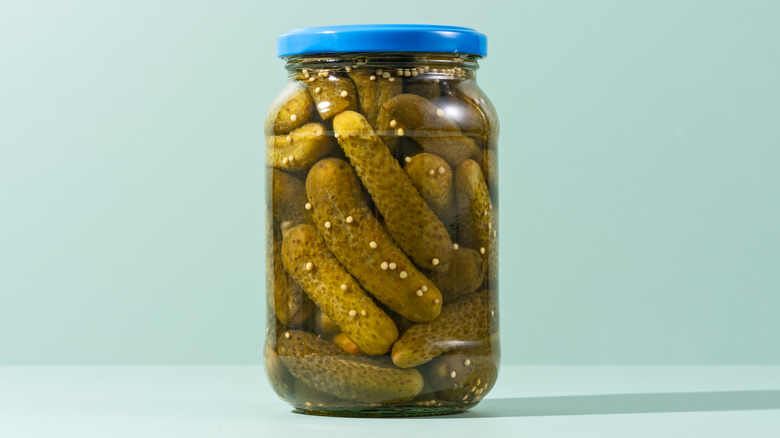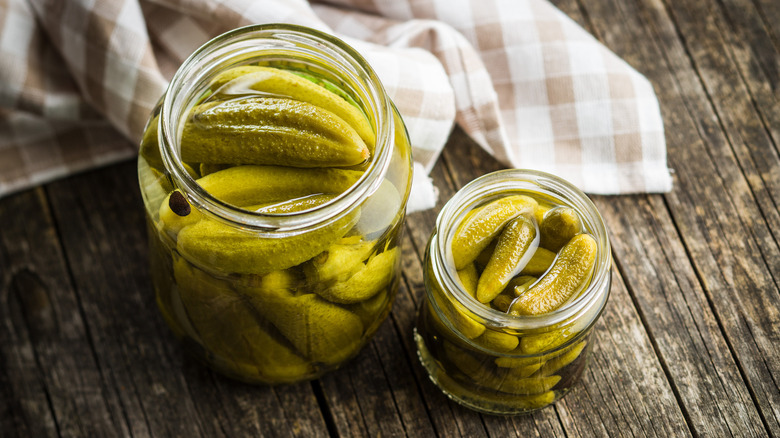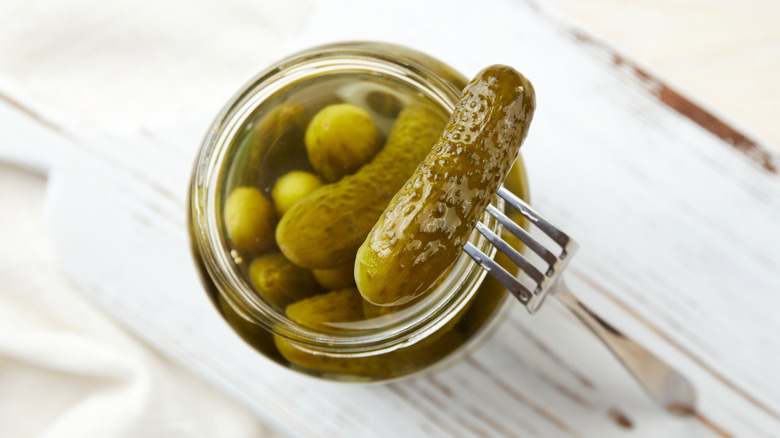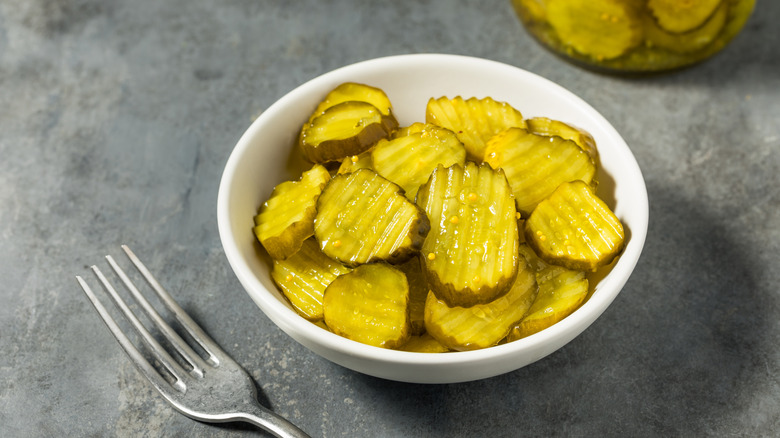What's The Difference Between Refrigerated And Shelf-Stable Pickles?
I'm back on my pickle beat and loving it. Today, I'm here to inform you that you might only be experiencing half of the wonderful pickle selection your local supermarket has to offer. That's because they're on display in two different places within the store, and there's a difference between the pickles you find jarred on the shelf and the ones kept in the refrigerated section.
As a kid, I wasn't picky; any and all pickles (except for the sweet kind, because those are blasphemy) would satisfy my cravings. However, as an adult, my pickle palate has matured a bit. I love and appreciate (nearly) all the pickles of this world, but some are just more worthy of purchase than others. Let's walk through your options.
They undergo different pickling processes
All throughout my life, Vlasic Whole Dill Pickles were the pickles for me. I knew exactly what aisle they were in growing up, and I could reach them easily because they were kept on a lower shelf. I would place them in my mom's cart without even having to ask since they were a regular part of our grocery list. It wasn't until adulthood that I came across Grillo's Pickles, which are kept in the refrigerator at my local grocery store.
When it comes to refrigerated pickles, the biggest difference is pasteurization. Grillo's Pickles, launched in 2008, are made through a "fresh pickling" process using vinegar as the main active agent. These pickles are not fermented, nor do they go through a pasteurization process.
How refrigerated and unrefrigerated pickles are made and what they taste like
In a quick pickling refrigeration method, a combination of salt, vinegar, and sugar (along with any other desired ingredients for the brine) are heated until the sugar and salt dissolve, and the pickles are soaked in the resulting liquid. The pickles have to be immediately refrigerated and are not shelf-stable.
By contrast, the pickles you buy unrefrigerated at the grocery store spend much more time soaking in brine, and the method used to make them is focused more on long-term preservation. This is OG of pickling processes, as it comes from times when people didn't have refrigerators to keep food fresh. Pickling was meant to make produce not only tasty but also shelf stable, so they tend to contain much more salt than quick pickled versions.
Although both methods can produce a perfectly delicious pickle, a refrigerated pickle tends to have a less salty flavor while retaining its sourness.
How long are pickles good for?
Both refrigerated and shelf-stable pickles can last fairly long when stored properly. The former will last a few months, but the latter can last up to two years if unopened. Opened shelf-stable cans or jars of pickles should be refrigerated and can last up to three months.
Despite the fact that they are sold at room temperature, I always store my Vlasic dills in the refrigerator as soon as I get them home. Because nothing beats the first juicy bite of cold, crispy pickle.



